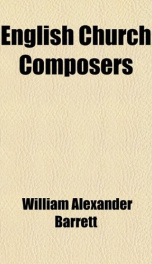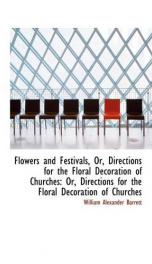english church composers

Purchase of this book includes free trial access to www.million-books.com where you can read more than a million books for free. This is an OCR edition with typos. Excerpt from book: organists were wont to accompany vocal music in the service; possibly such an arrangement may represent some effort of a composer, perhaps Benjamin Eogers, to supply a florid part for the organ after the prevailing fashion as regards compositions for the virginals. The list of printed music of Gibbons as compiled by Mr. Husk, may be seen sub voce Gibbons, in Grove's Dictionary. CHAPTER VII. HENRY LAWES, ADRIAN BATTEN, WILLIAM CHILDE, BENJAMIN ROGERS, MATTHEW LOCK. It will be noticed in the list of works by Gibbons, that two of the five-voice verse anthems are with viols. This statement indicates a somewhat early use of those instruments of accompaniment to sacred music; the parts are in unison with the voices, as was then common when they were employed. There was no attempt at independence of treatment, except in certain ritomelli passages while the voices were at rest. It has been asserted, and the supposition is a likely one, that "viols" were used to accompany the verse or soli parts, the full or chorus passages being supported by the organ. In the time of Gibbons the viol was coming into use, and as it was a fashionable instrument, the musicians of the period wrote frequently for it. Gibbons composed some Fancies for viols, and the celebrated John Jenkins,1 " the little manwith a great soul," did much to popularise the music of viols by his compositions for them in "Consort." Gibbons was not equal to Jenkins in his instrumental works, but in vocal music he stands alone, and for his skill, his invention and facility, truly deserves the title by which he has been sometimes called, " The English Palestrina." 1 B. 1592, D. 1678. In some respects Gibbons was more in advance of his time than Palestrina was in his, inasmuch as without actually foreseeing what might...
Info about the book
Author:
Series:
Unknown
ISBN:
1112440321
Rating:
4.5/5 (5)Your rating:
0/5
Languge:
English
Users who have this book
Users who want this book
What readers are saying
What do you think? Write your own comment on this book!
write a commentGenre
if you like english church composers try:
Other books by this author
Do you want to exchange books? It’s EASY!
Get registered and find other users who want to give their favourite books to good hands!



